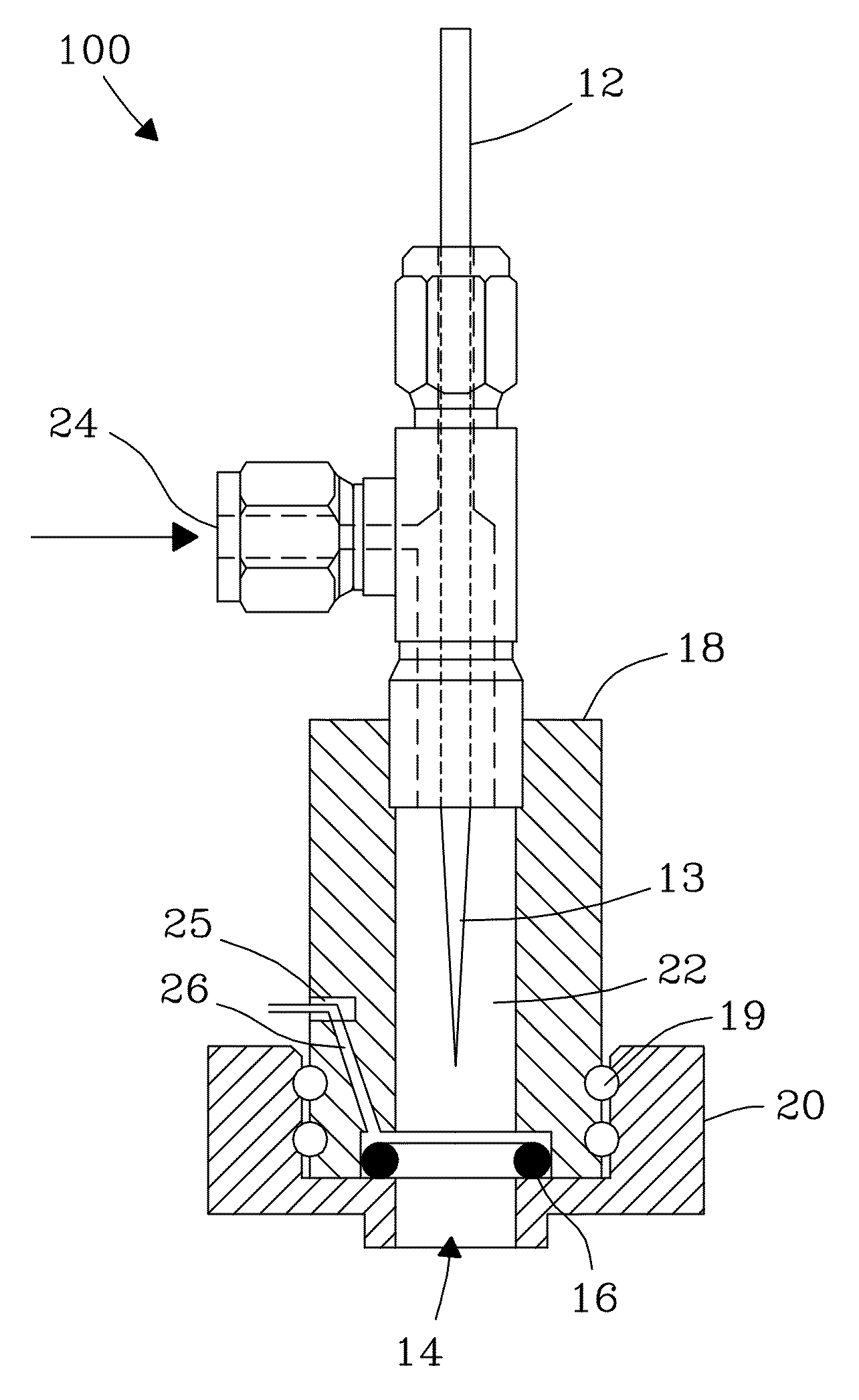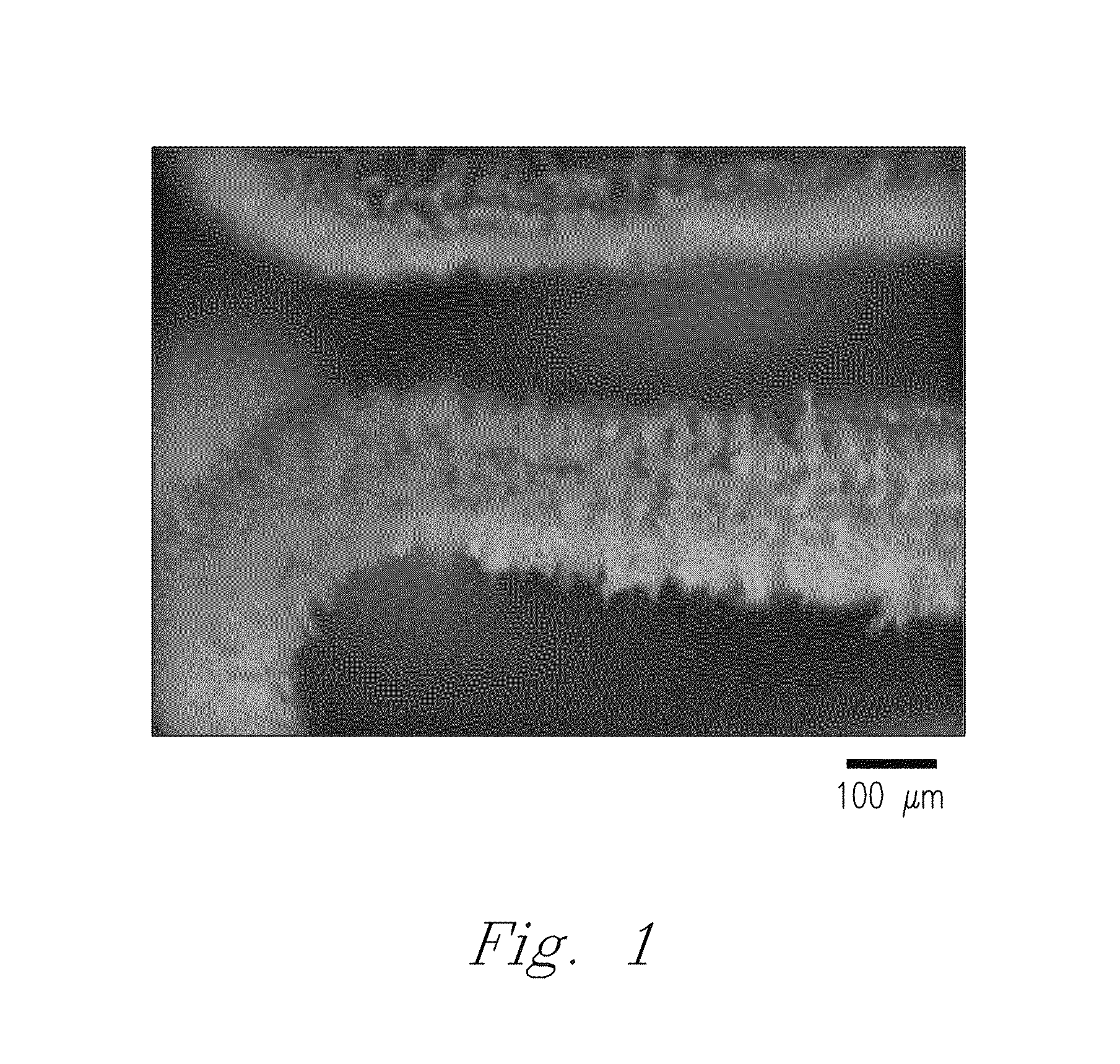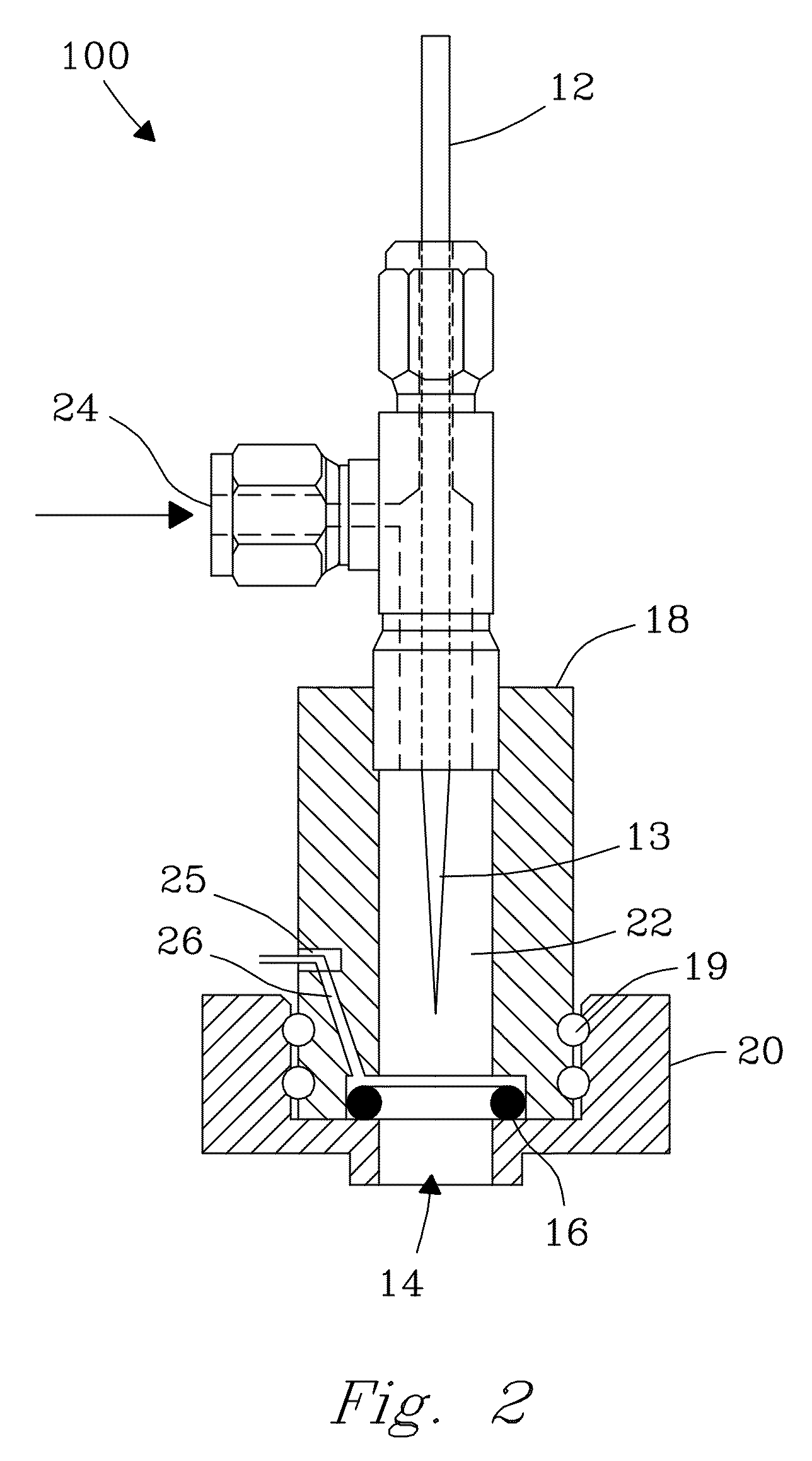System and method for enhanced electrostatic deposition and surface coatings
a technology of electrostatic deposition and surface coating, applied in the field of surface coating, can solve the problems of poor collection efficiency, poor coating densities, and poor nanoparticle generation and electrostatic collection (deposition) processes that produce surface coatings, and achieve the effect of enhancing the charge differential
- Summary
- Abstract
- Description
- Claims
- Application Information
AI Technical Summary
Benefits of technology
Problems solved by technology
Method used
Image
Examples
example 1
Coating Tests
[0153]Coating efficiency tests were conducted in a deposition vessel (e.g., 8-liter glass bell jar) centered over a base platform equipped with an auxiliary emitter and e-RESS expansion nozzle assembly. The invention auxiliary emitter was positioned at the top of, and external to, the deposition vessel. The auxiliary emitter was configured with a 1st auxiliary electrode consisting of a central stainless steel rod (⅛-inch diameter) having a tapered tip that was grounded, and a ring collector (⅛-inch copper) as a 2nd auxiliary electrode. Charged ions from the auxiliary emitter were carried in (e.g., N2) carrier gas into the deposition vessel. An exemplary flow rate of pure carrier gas (e.g., N2) through the auxiliary emitter was 4.5 L / min. The auxiliary emitter was operated at an exemplary current of 1 μA under current / feedback control. The e-RESS expansion nozzle assembly included a metal sheath, as a first e-RESS electrode composed of a length (˜4 inches) of stainless s...
example 2
Coatings Deposited Absent the Auxiliary Emitter
[0155]A test was performed as in Example 1 without use of the auxiliary emitter. Weight gains from deposited coatings for each of three stents were: 22 μg, 40 μg, and 42 μg, respectively. Coating efficiency for the test was 5.0%. Results showed coatings on the stents were light, non-uniform, and dendritic. Coatings were heaviest at the upper end of the stents and had a dendricity rating of ˜7, on average. Heavier coatings were observed near the top of the stents. Lighter coatings were observed at the mid-to-lower end of the stents, with some amount of the metal stent clearly visible through the coatings.
example 3
Effect of Increasing Emitter Current on Deposited Polymer Weight / Structure
[0156]A dramatic effect is observed in weight gains for applied coatings at the initial onset of auxiliary emitter current. A gradual increase in weight gains occurs with increasing current between about 0.1 μA and 1 μA. Thereafter, a gradual decrease in weight gains occurs with change in auxiliary emitter current between about 1 μA and 5 μA, most likely due to a saturation of charge transferred to particles by the auxiliary emitter.
PUM
| Property | Measurement | Unit |
|---|---|---|
| size | aaaaa | aaaaa |
| size | aaaaa | aaaaa |
| velocity | aaaaa | aaaaa |
Abstract
Description
Claims
Application Information
 Login to View More
Login to View More - R&D
- Intellectual Property
- Life Sciences
- Materials
- Tech Scout
- Unparalleled Data Quality
- Higher Quality Content
- 60% Fewer Hallucinations
Browse by: Latest US Patents, China's latest patents, Technical Efficacy Thesaurus, Application Domain, Technology Topic, Popular Technical Reports.
© 2025 PatSnap. All rights reserved.Legal|Privacy policy|Modern Slavery Act Transparency Statement|Sitemap|About US| Contact US: help@patsnap.com



